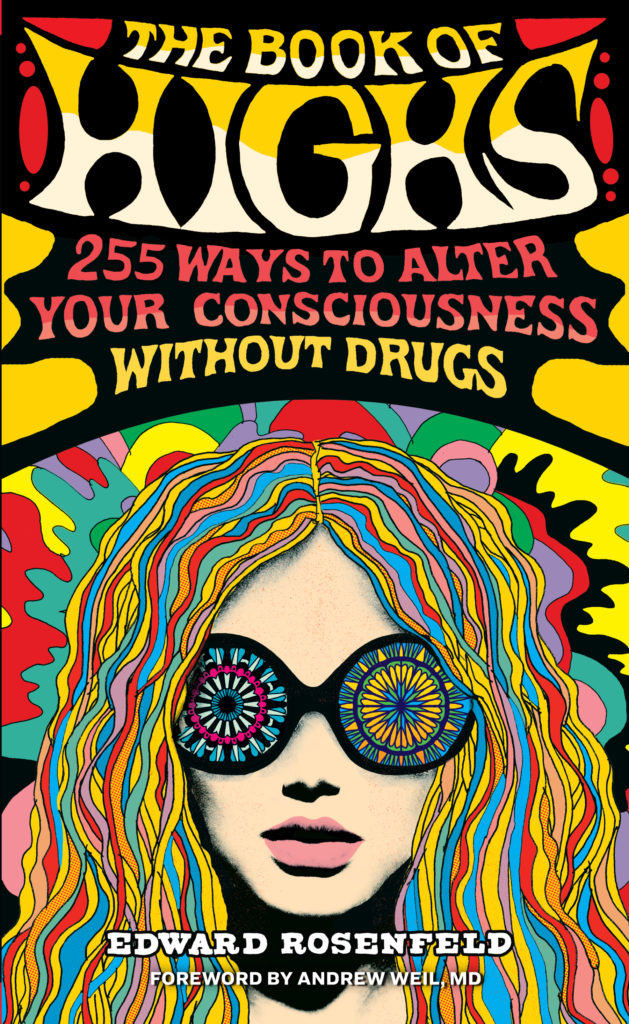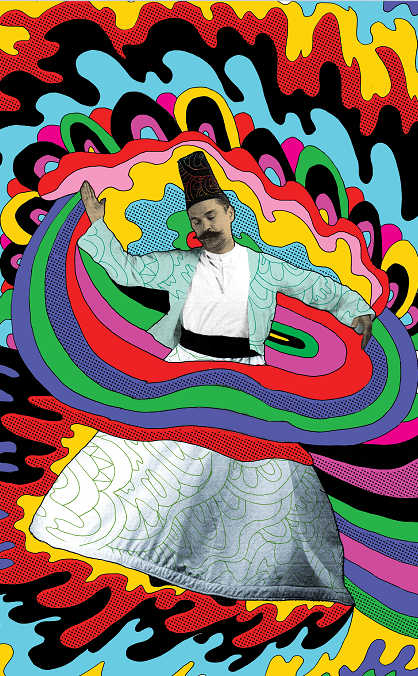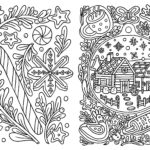
Call it altering consciousness, call it getting high, or call it mindfulness. Humans are hardwired to seek ways to transcend the limits of everyday awareness, whether it’s the child spinning in circles until she’s dizzy or a runner experiencing the day’s first rush of dopamine. And you don’t need drugs or alcohol to change your perspective—as Edward Rosenfeld shows in The Book of Highs, the “high” is inside, and there are literally hundreds of perfectly natural ways that we can find it.
Drawn from cultures around the world, The Book of Highs is a fascinating compendium of the ancient, the new, the weird, and the remarkable. We’ve picked the top 10 experiences from a wide-ranging collection of 255 legal and creative ways to push your mind into experiential realms.
For anyone looking to explore the untapped potential of their mind and body—whether you’re looking for life-changing adventure or something to do every day to switch up your routine—The Book of Highs will get you there.
- Start your day with the Zen morning laugh
Assume a standing position. Put your hands on the back part of your hips, with your palms and face upward. Now, begin to laugh. Keep laughing. Let your laughter feed off itself and propel itself through your body and out. Laugh fully and completely for a few minutes. After a Zen morning laugh, you’re ready for anything. - Natural sound amplification
You are constantly making noise. Your heart beats and pumps as your lungs fill and collapse. The blood rushes through your veins and arteries. You breathe. Your bones creak and occasionally crack. You can hear all of the noises noted above using a stethoscope. Turn it into an extraordinary experience by connecting the stethoscope to a microphone and amplification equipment to “broadcast” your internal music. - Chanting
Chanting is a particular way of making sound with the human voice involving repetition of sound and tone. No matter which way you chant, the main idea is to develop your breathing through your chanting. By changing your normal breathing through chanting you will be increasing the oxygen level of the blood reaching your brain and, thereby, alter your consciousness. A great chant to start with is the chanting of your own name. Alternatively, you can try the holy mantra: OM - Sensory awareness
We receive information from and about our environment through our senses. The primary senses are: vision (eyes), hearing (ears), smell (nose), taste (tongue, mouth, and nose), and touch (skin and tongue).Our senses continually process an amazing amount of information. There are many different methods, techniques, and exercises that can help us to develop our sensory awareness.The best way to develop the senses is to find out what it’s like to live without them. This is called sensory deprivation. Sight lends itself to this experiment best. Select an environment you know very well—your house, your room, or someplace equally familiar. Close your eyes or wear a blindfold, and sightlessly examine your environment. Pay attention to those senses you use when you cannot see. You will depend on your sense of touch to feel your way around; you may also use your sense of smell, you will hear sounds to which you rarely pay conscious attention. - Spinning
Spinning is easy to do and, when done correctly, as children do it, spinning is safe. Stand still. Start spinning. Feel the beat of your heart. Spin around and around. Spin in a counterclockwise direction, even if you are left-handed. Use one foot as the pusher and the other as the balance.The Sufi whirling dervishes hold their arms out like wings, with their fingers of their right hands pointing up to the sky to receive energy and grace and the palms of their left hands pointing down to the earth, as a means of dispensing their divine gifts to mankind.

- Psychedelic bathtub—when moiré patterns, lights, and a luminescent bubble bath make a bathroom like no other
Harry Hermon, a researcher into psychedelics and altered states of consciousness, developed a psychedelic bathtub that might more properly be called a psychedelic bathroom. The room where the bathtub is located is fitted with a variety of light-and-sound fixtures, including a revolving mirrored ball with spots, color wheels, and strobes. On the walls are a number of mounted moving moiré patterns, and other colored lights that may be varied as to intensity and operation. When a luminescent bubble bath is added to the water and the subject gets in the bathtub, the moiré patterns begin shimmering and revolving, the strobes flicker at a variety of different speeds, the mirrored ball sends beams of rainbow light shooting across the room, and all of the above reflect the shine onto and through the multicolored soap bubbles. When sounds—chants, electronic music, or random noise patterns—are added, the bathroom becomes a fantastic room, and the subject becomes high. With a little effort, the purchase of the correct equipment, and the proper design implementations, the psychedelic bathtub can be assembled almost anywhere.
- Holophonic sound—hearing recordings in three dimensions can produce tactile, otherworldly sensations
In the 1980s, Argentine researcher Hugo Zuccarelli developed a recording technique that made recorded samples sound three-dimensional. As a result, we hear the recorded sound so realistically that it can stimulate our other senses. For instance, a recording that re-creates a haircut will cause listeners to feel the snips of the scissors, the buzz of the razor beneath their ear. Even though you know the sounds are coming from your headphones, it will feel like they are moving behind you and in front of you. The haircut recording is available on the Book of Highs YouTube playlist. Visit http://bit.ly/BookofHighsYouTube
Excerpted from The Book of Highs by Edward Rosenfeld (Workman Publishing). Copyright © 2018. Illustrations by Nate Duval.
Don’t forget to check out the book!
 About the Book:
About the Book:
Call it altering consciousness, call it getting high, or call it mindfulness. Humans are hardwired to seek ways to transcend the limits of everyday awareness, whether it’s the little kid spinning in circles to get dizzy or a runner experiencing the day’s first rush of dopamine. And you don’t need drugs—as Edward Rosenfeld shows, the “high” is inside, and there are literally hundreds of perfectly natural ways that we can use to find it.
An encyclopedic survey of all the ways humans try to achieve altered states of consciousness, The Book of Highs is a complete update of a book published in 1973, after the government outlawed psychedelics. Here are recent developments—Virtual Reality and Brainwave Machines—and positive techniques such as Self-Hypnosis, Alterations of Breathing, Fervent Prayer. And “negative” techniques—Self-Flagellation, Sleep Deprivation. Methods derived from religious and mystic traditions—Transcendental Meditation, Tantric Sex. Techniques that involve devices, whether nonelectric like Mandalas, Metronome Watching, Body Confinement—or electric and electronic—Bio-Feedback, Stroboscopes, the Psychedelic Bathtub, Moire Patterns, Brain Music. Whether you’re out for a life-changing adventure—Skydiving, Fire-Walking, or Kayak Disease (which occurs when you spend three days in a kayak off the shore of Greenland)—or just want to have a break in your everyday routine with a Zen Morning Laugh or by Jumping Up and Down, this book is guaranteed to blow your mindfulness.
Buy the Book
Amazon | Barnes & Noble | Indiebound | Books-A-Million | Workman





No Comments